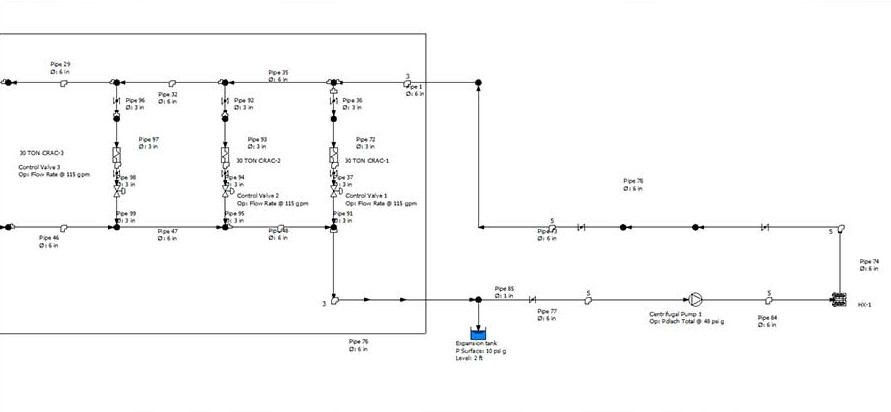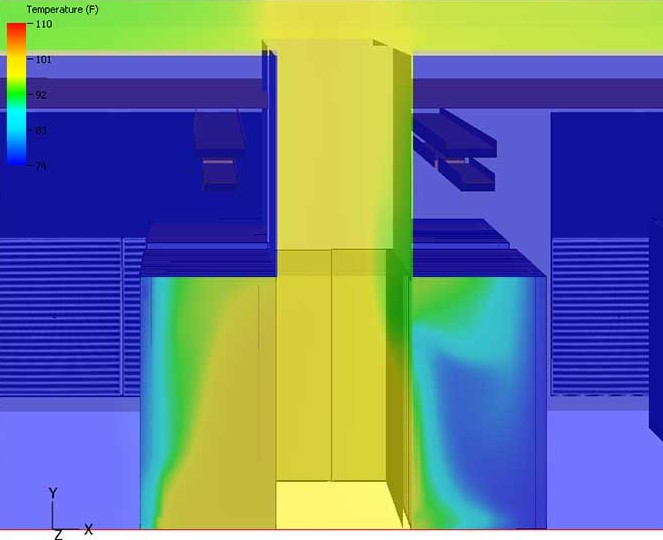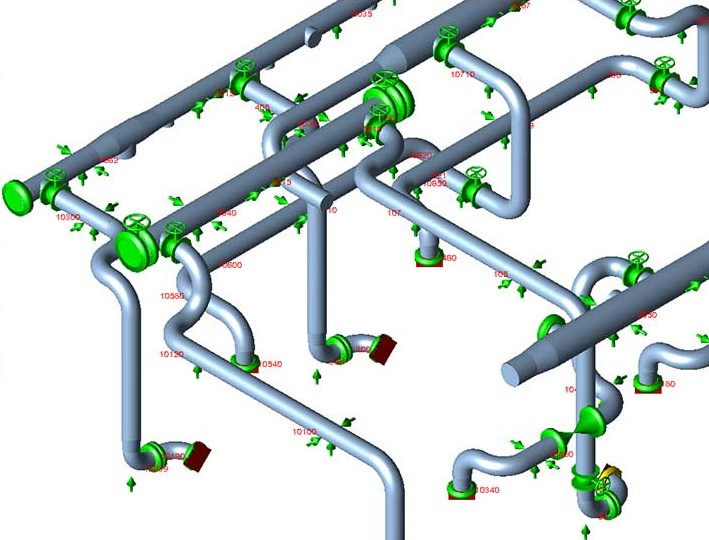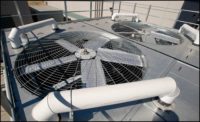Data centers are crucial for storing, processing, and distributing vast amounts of data in the modern era, as internet-based data-transfer services are essential in our daily work and personal lives. The COVID-19 pandemic made remote work and online communication an even more vital part of our business practices. To prevent equipment overheating, which can lead to costly downtime and equipment failure, data centers require constant cooling.
Data Center Cooling System Design
The cooling system design for a data center involves a complex process of analyzing the heat output of equipment, selecting the appropriate cooling equipment, and designing an efficient system to distribute and remove heat. There are two primary methods for cooling data centers: air- and liquid-based cooling.
Air-based cooling involves using fans and air conditioners to circulate cool air throughout the racks. Hot- and cold-aisle configurations, along with raised-floor setups, are common in air-based cooling systems.
Liquid-based cooling utilizes a liquid coolant, such as water or refrigerants, to absorb heat and transport it to a heat exchanger, such as rear-door heat exchanger, direct-to-chip cooling, and immersion cooling.
Designing an efficient cooling system requires careful consideration of various factors, such as the size and layout of the data center, the heat output of equipment, and the ambient temperature and humidity. A well-designed system should be able to maintain a consistent temperature and humidity level within the data center to prevent equipment failure.
Energy efficiency and sustainability are also important factors when designing a data center. ASHRAE 90.4, “Energy Standard for Data Centers,” requires a performance-based design standard that offers the design components for mechanical load (MLC) and electrical loss (ELC). Calculations of the MLC and ELC are made and then compared to the maximum allowable values shown in the standard based on climate zones.
Some clients also use power usage effectiveness (PUE), a standard efficiency metric for power consumption in data centers, as a benchmark for energy efficiency. A simple definition of PUE is the ratio of the total amount of power used by a computer data center facility to the power delivered to computing equipment.
Computer Software Modeling supporting Data Center Cooling System Design

- Hydraulic Modeling software — Computer hydraulic modeling software, such as PipeFlo and AFT Fathom, can be used to design and analyze complicated liquid-based piping systems (such as looped system) in data centers that are very difficult to be calculated and validated by hand calculation. It can help sizing pumps based on pressure drops, flow rates, and pipe sizes to optimize the performance of the cooling system. The software can also be used to model different cooling equipment configurations and analyze their impact on system performance. Hydraulic modeling can simulate certain failure scenarios and can help engineers design a cooling system that is efficient and effective at reducing energy consumption and operating costs.
- Computational Fluid Dynamic (CFD) software — CFD models, such as 6Sigma, can be used to simulate and analyze the airflow in a data center air-based cooling system. It can provide detailed information on temperature, pressure, and flow rates of room air from the air-handling unit (AHU) through racks, allowing engineers to identify potential issues (such as “hot-spot” for rack intake air) and optimize the design of the cooling system. The software can also be used to model different cooling equipment configurations and evaluate its performance under different operating conditions.

A CFD model also can be used to simulate the outdoor equipment performance, such as a cooling tower, emergency generator exhaust, etc. The worst scenarios, based on local wind conditions, can be identified.
- Pipe Stress Modeling software — CAESAR II by HEXAGON is a pipe stress analysis software package that can be used to evaluate the structural integrity of a data center liquid-based cooling system. It can analyze the effects of thermal expansion, seismic activity, and other external forces on the piping system. The software can help engineers design a system that is safe, reliable, and meets industry standards and codes.

Special conditions, such as snow load, must be counted in cold climate zones. With the software, an engineer can identify the type of pipe support anchor needed in a complicated pipe system to satisfy equipment interface requirements (nozzle, pump inlet/outlet, etc.).
Conclusion
Data center cooling system design is a complex process that requires careful consideration of multiple factors. Software packages, like PipeFlo, 6Sigma CFD, and CAESAR II, can support engineering design and help engineers design an efficient, effective, and safe cooling system. By using these tools, engineers can optimize system performance, reduce energy consumption and operating costs, and ensure the reliable operation of critical equipment.
Reference
1. ASHRAE 90.4 Energy Standard for Data Centers





